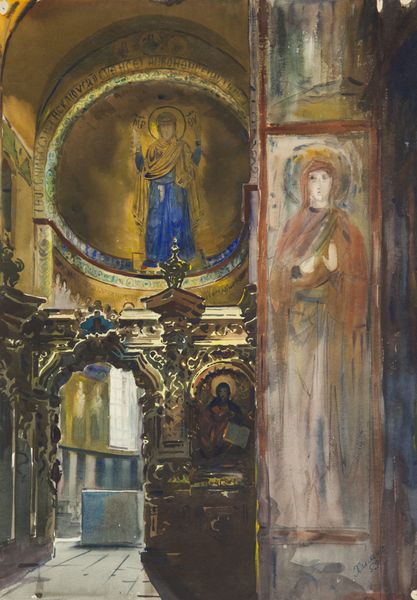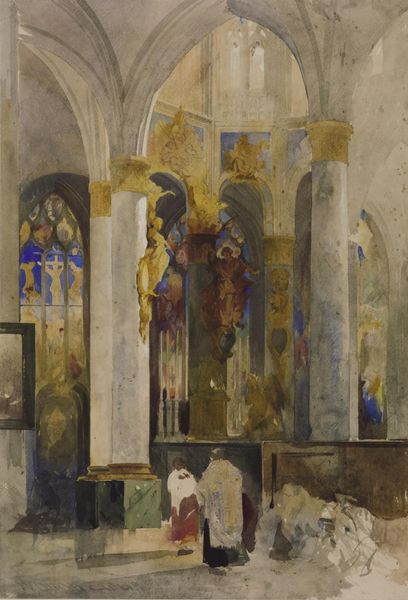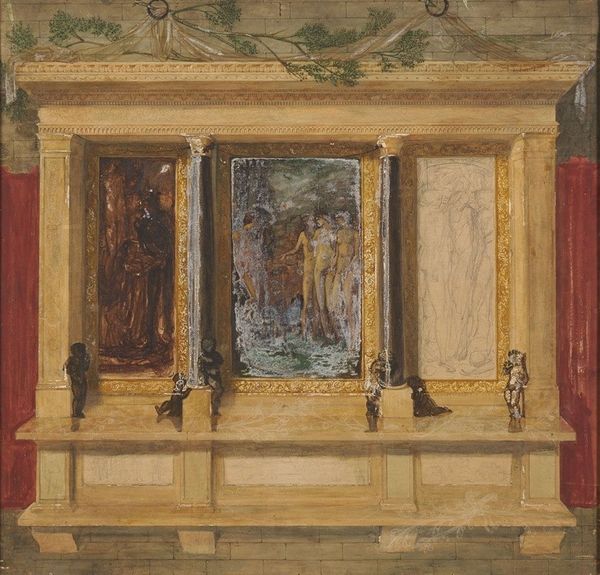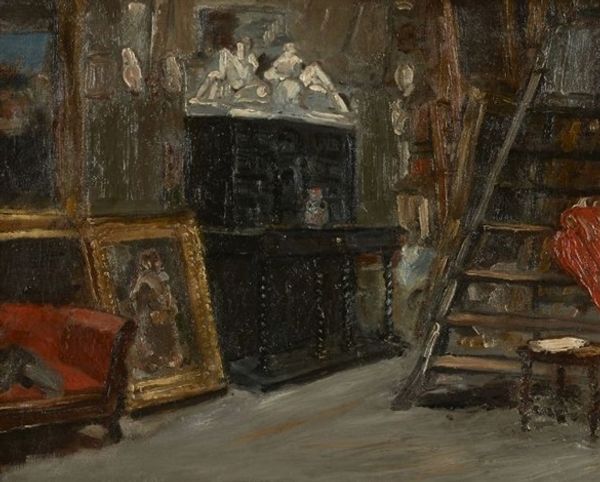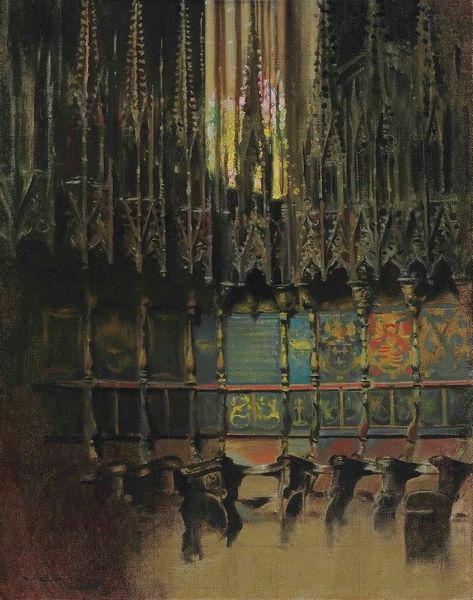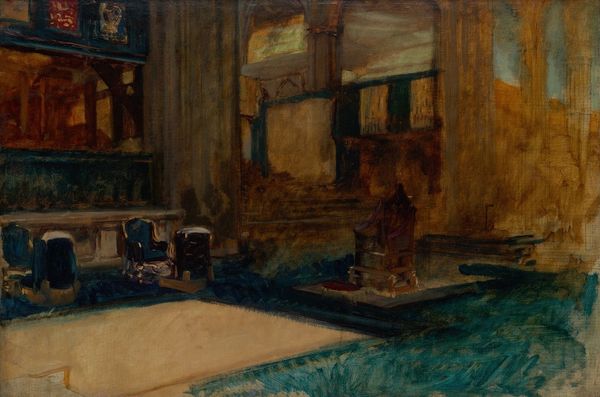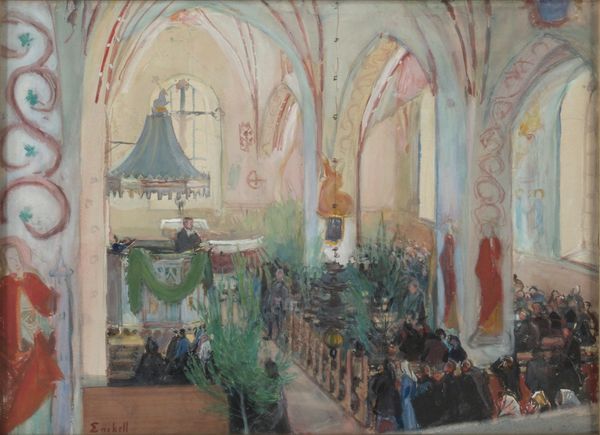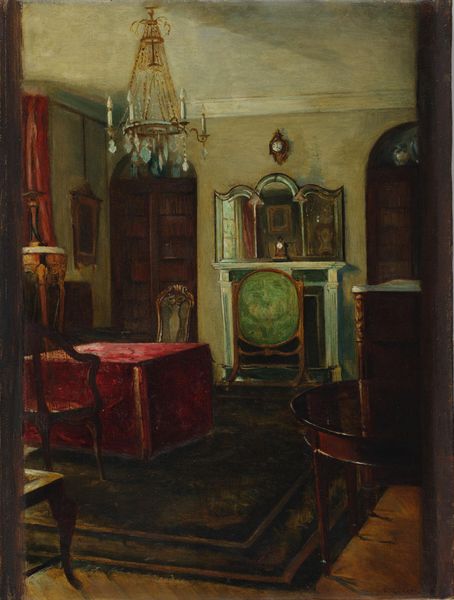
Copyright: Public Domain: Artvee
Curator: We're looking at Leon Wyczółkowski's "Interior of the church in Dębno," created circa 1902, employing watercolor and impasto techniques. Editor: It's got this fascinatingly murky, dreamy quality. Like I'm peeking into a childhood memory of a very, very old place. Curator: Indeed, the church itself dates back to the Romanesque and Gothic periods. Wyczółkowski was captivated by the architecture and the frescoes it housed, particularly their place in Polish cultural heritage. Editor: You can feel the weight of history, right? It's not just a painting of a building; it's about time, faith, and the slow drip of centuries impacting a space. But the way the light hits feels contemporary. Curator: Consider how 19th-century nationalist movements in Poland often looked to the medieval past to construct a sense of shared identity against imperial forces. Paintings of historical monuments played a key role. Wyczółkowski, placing a common, rural wooden church into high art. Editor: Almost making it heroic. It's interesting because the colours are very earthy. There's this glow about it. And that ceiling. So much decorative elements that would make one pause when they notice it isn't symmetrical or even a balanced presentation of faith when juxtaposed against the lower level paintings. Curator: I think the perspective emphasizes that intricate wooden ceiling which speaks to an aesthetic connection between folk art and religious expression. The choice of media - watercolor - may further create a contrast with how this scene had to exist under empire subjugation. The contrast highlights those power dynamics within the painting and during this time period for the church. Editor: So it's this quiet resistance in visual form, yeah? A celebration of something small and intimate but still so profound. I like that a lot. You can almost hear the echoes bouncing off the walls... Curator: Precisely, the work exists as this potent reminder of the community’s resilience within these intersections of religious, social, and personal histories. Editor: That's a powerful perspective. It definitely makes you think differently about such spaces that otherwise seem antiquated.
Comments
No comments
Be the first to comment and join the conversation on the ultimate creative platform.

